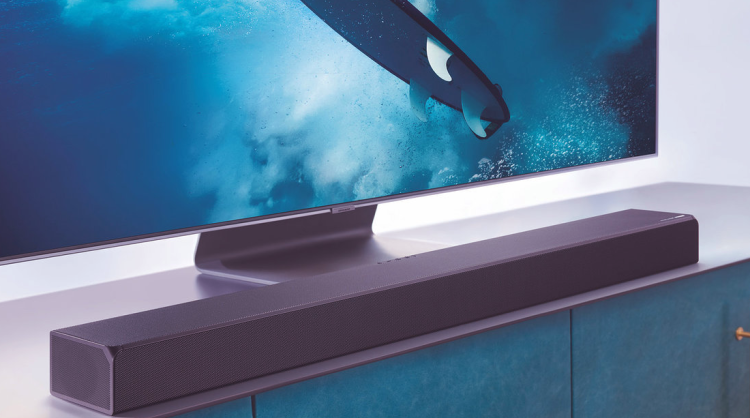Unlocking the Sonic Symphony: Understanding How Soundbars Harmonize with Any TV

In the ever-evolving realm of home entertainment, achieving an immersive audio experience is a crucial element. The television, being the centerpiece of our living rooms, is not only a visual gateway to various forms of content but also a potential auditory haven. Soundbars have emerged as a popular solution to enhance TV audio, but a common question prevails: Does a soundbar work with any TV? This article delves into the intricacies of soundbars and explores their compatibility with a diverse range of televisions.
The Evolution of TV Audio:
Traditionally, television sets were equipped with built-in speakers that often struggled to deliver a captivating audio experience. As TVs became sleeker and slimmer, the space available for robust speaker systems diminished, leading to compromised audio quality. This sparked the need for external audio solutions, paving the way for soundbars.
Understanding Soundbars:
A soundbar is a compact, elongated speaker system designed to improve audio output from a TV. These devices come equipped with multiple speakers arranged in a single enclosure, along with amplifiers to enhance sound quality. They are a versatile solution that caters to a broad spectrum of TV sizes and room layouts.
Universal Connectivity:
One of the key advantages of soundbars is their universal compatibility. Manufacturers design soundbars with a variety of connectivity options to ensure seamless integration with any TV. Most soundbars feature standard inputs such as HDMI, optical, and auxillary ports, making them adaptable to the majority of television models available in the market.
HDMI: High-Definition Multimedia Interface (HDMI) is a ubiquitous audio-video interface in modern televisions. Soundbars with HDMI connectivity can easily sync with TVs through a single cable, transmitting both audio and video signals. This simplifies the setup process and reduces cable clutter.
Optical: Optical audio connections are another common feature in soundbars. TVs equipped with optical audio output can connect to soundbars using a dedicated optical cable, ensuring a high-quality digital audio signal.
Auxiliary: Soundbars often include a standard 3.5mm auxiliary input, allowing them to connect to TVs lacking HDMI or optical ports. This versatility ensures compatibility with a wide range of television models, including older ones.
Bluetooth: Some modern soundbars incorporate Bluetooth technology, enabling wireless connectivity with TVs. This feature eliminates the need for physical cables, providing a clean and uncluttered setup. However, it’s important to note that both the TV and soundbar must support Bluetooth for this to work.
Wireless Subwoofer: To further enhance the audio experience, many soundbars come with wireless subwoofers. These subwoofers can be strategically placed in the room to deliver deep bass without the constraints of wired connections. The wireless nature of these subwoofers adds flexibility to the overall setup.
TV Compatibility Factors:
While soundbars are designed to be universally compatible, certain factors should be considered for optimal performance. TV size, audio output capabilities, and the layout of the room play crucial roles in determining the effectiveness of a soundbar.
TV Size: Soundbars come in various sizes to accommodate different TV sizes. It’s essential to match the soundbar’s length to the width of the TV to achieve a balanced and aesthetically pleasing setup.
Audio Output: Some TVs feature advanced audio processing capabilities, such as Dolby Atmos or DTS:X. To fully capitalize on these technologies, it’s advisable to choose a soundbar that supports them. Additionally, checking the TV’s audio output settings and adjusting them to match the soundbar’s specifications can optimize performance.
Room Layout: The acoustics of the room where the TV is located can significantly impact the audio experience. Soundbars with features like room calibration or adaptive audio technology can adjust their output to suit the room’s characteristics, ensuring consistent sound quality.
Conclusion:
In conclusion, soundbars are a versatile and effective solution for enhancing TV audio, and their compatibility extends across a wide range of television models. With various connectivity options and features designed to cater to different needs, soundbars can seamlessly integrate with any TV, delivering an immersive and cinematic audio experience. As technology continues to advance, soundbars will likely evolve to meet the ever-changing demands of home entertainment, ensuring that the sonic symphony accompanying our visual experiences remains captivating and immersive.
Does a soundbar work with any TV?
A1: Yes, in most cases, soundbars are designed to work with a wide range of TVs. They come with various connectivity options such as HDMI, optical, aux, and Bluetooth, ensuring compatibility with different TV models.
How do I connect a soundbar to my TV?
A2: Connecting a soundbar to your TV is typically straightforward. You can use an HDMI cable, an optical cable, or a 3.5mm aux cable, depending on the available ports on your TV and soundbar. Some soundbars also support wireless Bluetooth connectivity for a cable-free setup.
What if my TV doesn’t have HDMI or optical ports?
A3: If your TV lacks HDMI or optical ports, you can still connect a soundbar using the 3.5mm aux input if both your TV and soundbar have this option. Alternatively, consider upgrading to a soundbar with Bluetooth capability for a wireless connection.
Are there specific soundbars for certain TV brands?
A4: Soundbars are generally designed to be compatible with any TV brand. They focus on standardized connectivity options like HDMI and optical inputs, ensuring widespread compatibility across various television models.
Can I use a soundbar with an older TV?
A5: Yes, you can use a soundbar with an older TV as long as it has the necessary connectivity options. If your TV only has RCA outputs, you might need an adapter to connect it to the soundbar. Always check the available ports on both the TV and the soundbar.
Do I need a separate remote for the soundbar?
A6: Many soundbars come with their own remote control, allowing you to adjust volume, settings, and modes. Some soundbars can also be programmed to work with your TV remote, simplifying the control process.
Are soundbars compatible with smart TVs?
A7: Yes, soundbars are compatible with smart TVs. Smart TVs often have HDMI ports, making it easy to connect them to soundbars. Additionally, using HDMI-ARC (Audio Return Channel) can enable seamless communication between the TV and soundbar.
Can I use a soundbar with a wall-mounted TV?
A8: Absolutely. Many soundbars come with mounting options, allowing you to install them on the wall below or above your TV. Ensure that the soundbar’s size and design complement your wall-mounted TV for an aesthetically pleasing setup.
Do soundbars work with gaming consoles?
A9: Yes, soundbars work well with gaming consoles. Connecting the gaming console to the TV and then using an appropriate audio connection between the TV and soundbar ensures that you get enhanced audio for your gaming experience.
Can I use a soundbar without a subwoofer?
A10: Yes, you can use a soundbar without a subwoofer. Many soundbars are designed to deliver a satisfactory audio experience on their own. However, adding a subwoofer can enhance the low-frequency audio, providing a more immersive sound profile.
Remember to consult the user manuals of both your TV and soundbar for specific instructions on connectivity and compatibility. Always choose a soundbar that suits your audio preferences, room size, and TV specifications for the best possible audio experience.






